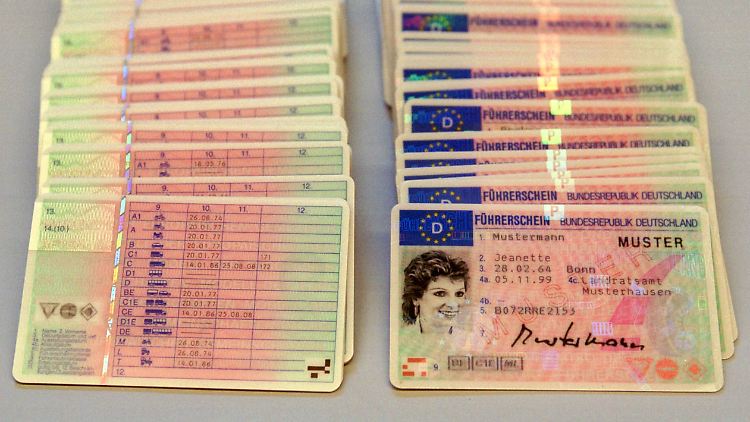The Process of Obtaining a Driver's License: An Informative Guide
Obtaining a chauffeur's license is a considerable milestone in many people' lives. It is typically seen as the primary step towards independence and duty. This article provides an extensive introduction of the procedure associated with getting a driver's license, including the experiences that come with it. From comprehending the different kinds of licenses to browsing through the application process, this guide will assist aspiring motorists get ready for the road ahead.
Comprehending the Different Types of Driver's Licenses
Before starting the application procedure, it is important to understand the different kinds of driver's licenses offered. It must be noted that licensing categories might vary by state or nation; nevertheless, the basic categories are as follows:
| License Type | Description |
|---|---|
| Learner's Permit | A limited license permitting brand-new chauffeurs to practice under guidance. |
| Class C License | The most common license type that enables individuals to run basic automobiles. |
| Class B License | Required for drivers of larger cars, such as buses or trucks. |
| Class A License | Essential for running heavy trucks and large trailers. |
| Motorcycle License | Particularly for operating bikes. |
Understanding these classifications assists people select the suitable license type based upon their driving needs.
Steps to Obtain a Driver's License
Obtaining a driver's license typically includes a series of well-defined actions. Here's a structured summary that striving chauffeurs can follow:
1. Research study and Choose a Driving School
- Examine regional schools to discover one that fits your needs.
- Examine online reviews and request suggestions.
- Confirm the school's accreditation and licensing.
2. Get a Learner's Permit
- A lot of jurisdictions need new chauffeurs to obtain a student's permit first.
- Get ready for a written test to examine your understanding of road signs and traffic laws.
- After obtaining the permit, practice driving under guidance.
3. Complete Driver's Education
- Enlist in a driver's education course, which often includes class direction and behind-the-wheel training.
- Completing a state-approved course might minimize your wait time for a complete license.
4. Practice Driving
- Invest adequate time practicing driving with a licensed instructor or a knowledgeable chauffeur.
- Concentrate on different driving conditions, such as night driving and highway travelling.
5. Schedule Your Driving Test
- When you feel prepared, schedule your driving test through your local Department of Motor Vehicles (DMV) or equivalent.
- Guarantee all essential documents are prepared ahead of time.
6. Take the Driving Test
- Get to the screening center with all required documents.
- Total both the written and practical driving assessments.
7. Get Your Driver's License
- After passing both tests, you will be provided a chauffeur's license.
- Familiarize yourself with any limitations associated with your brand-new license.
Creating a methodical method assists simplify the experience, making it less overwhelming for new motorists.
Typical Experiences During the Licensing Process
The road to obtaining a motorist's license is filled with numerous experiences. Numerous individuals experience challenges and victories along the way. Here are some typical experiences reported by new drivers:
Nervousness During Testing
- It is common for new drivers to feel nervous before taking their tests. This anxiety can be addressed through sufficient practice and relaxation techniques.
Learning from Mistakes
- Making mistakes is part of the learning procedure. Lots of individuals report discovering essential driving abilities from initial failures during practice sessions or tests.
Getting Confidence
- As experience constructs and driving skills enhance, lots of people explain a considerable increase in confidence behind the wheel.
The Freedom of Driving
- The excitement and liberty of making a motorist's license typically outweigh the difficulties of the procedure. Many motorists treasure the newfound independence that features having a license.
Establishing Responsibility
- With the privilege of driving comes the responsibility of ensuring security for oneself and others on the road. Many new motorists express an increased sense of responsibility.
Often Asked Questions (FAQs)
1. How old do I require to be to get a driver's license?
A lot of states require candidates to be at least 16 years of ages to look for a student's authorization, and 18 years old for a full chauffeur's license.
2. What files are required for the application?
Typically needed files include proof of identity (such as a birth certificate), Social Security number, evidence of residency, and completion of a motorist's education course if suitable.
3. How much does it cost to get a driver's license?
The expense varies considerably by state or nation, varying from ₤ 20 to ₤ 100, depending on various aspects such as screening charges and educational courses.
4. Can I drive with a learner's permit?
Yes, but with certain limitations; usually, a certified chauffeur should accompany you.
5. How long is similar web page ?
Most driver's licenses are valid for 4 to 8 years, depending on the state regulations.
Getting a motorist's license is a multifaceted process that blends knowing, practice, and responsibility. By comprehending the various kinds of licenses, following a structured method, and acknowledging common experiences, potential drivers can browse their way toward acquiring this necessary credential. Whether it represents newly found self-reliance or a chauffeur's long-lasting journey, the significance of a chauffeur's license remains a significant aspect of personal advancement and movement in today's world.

